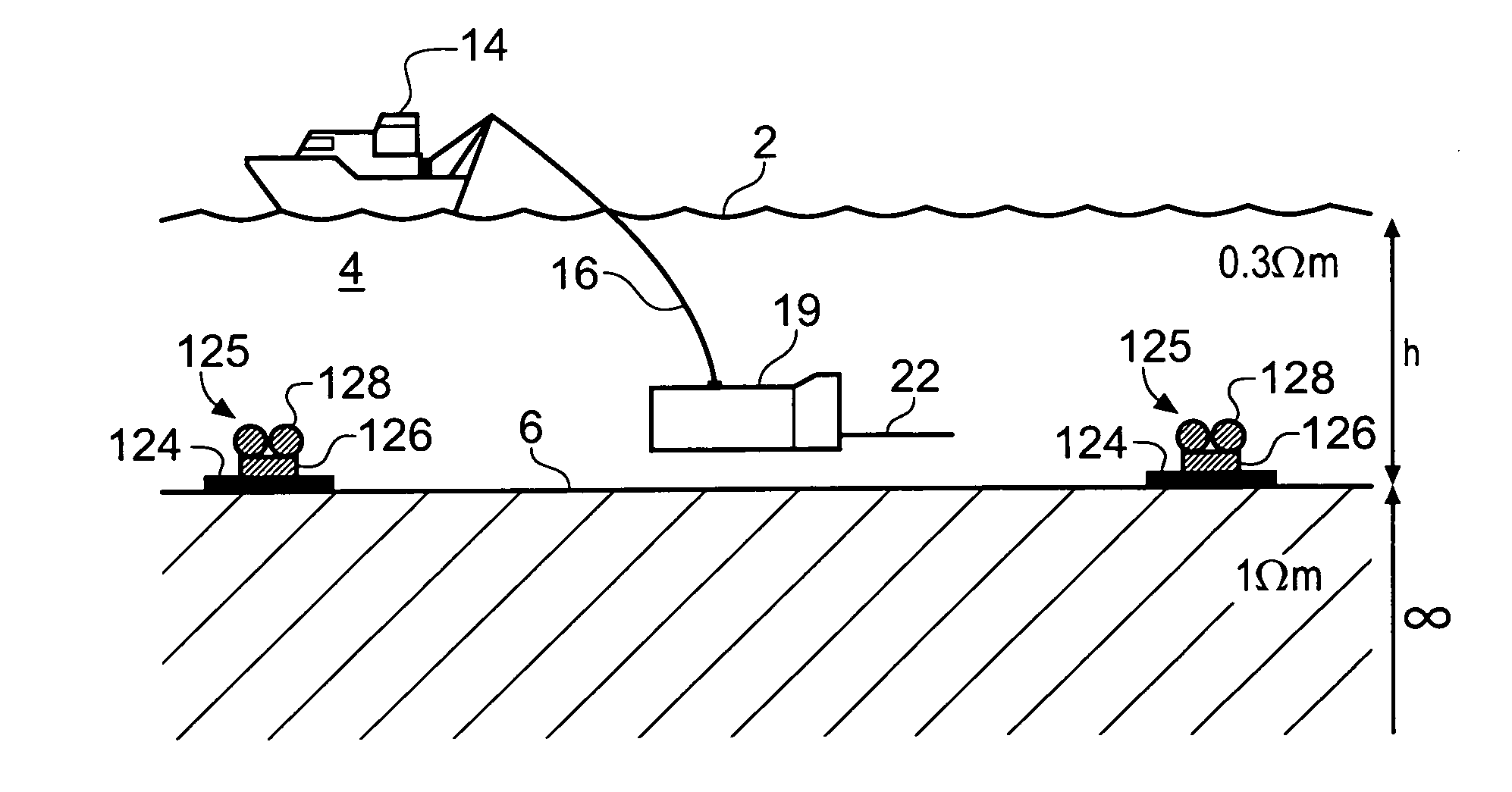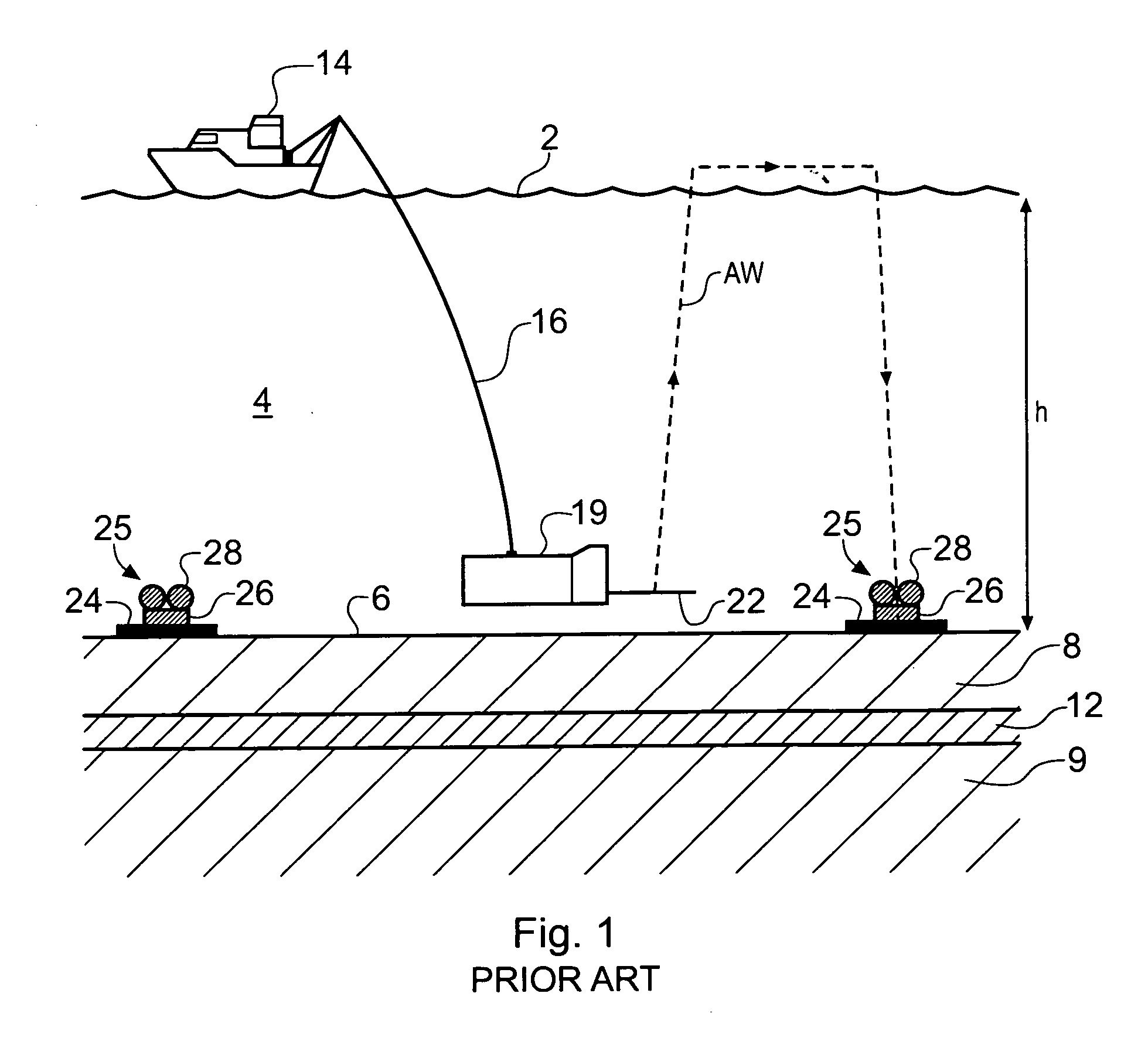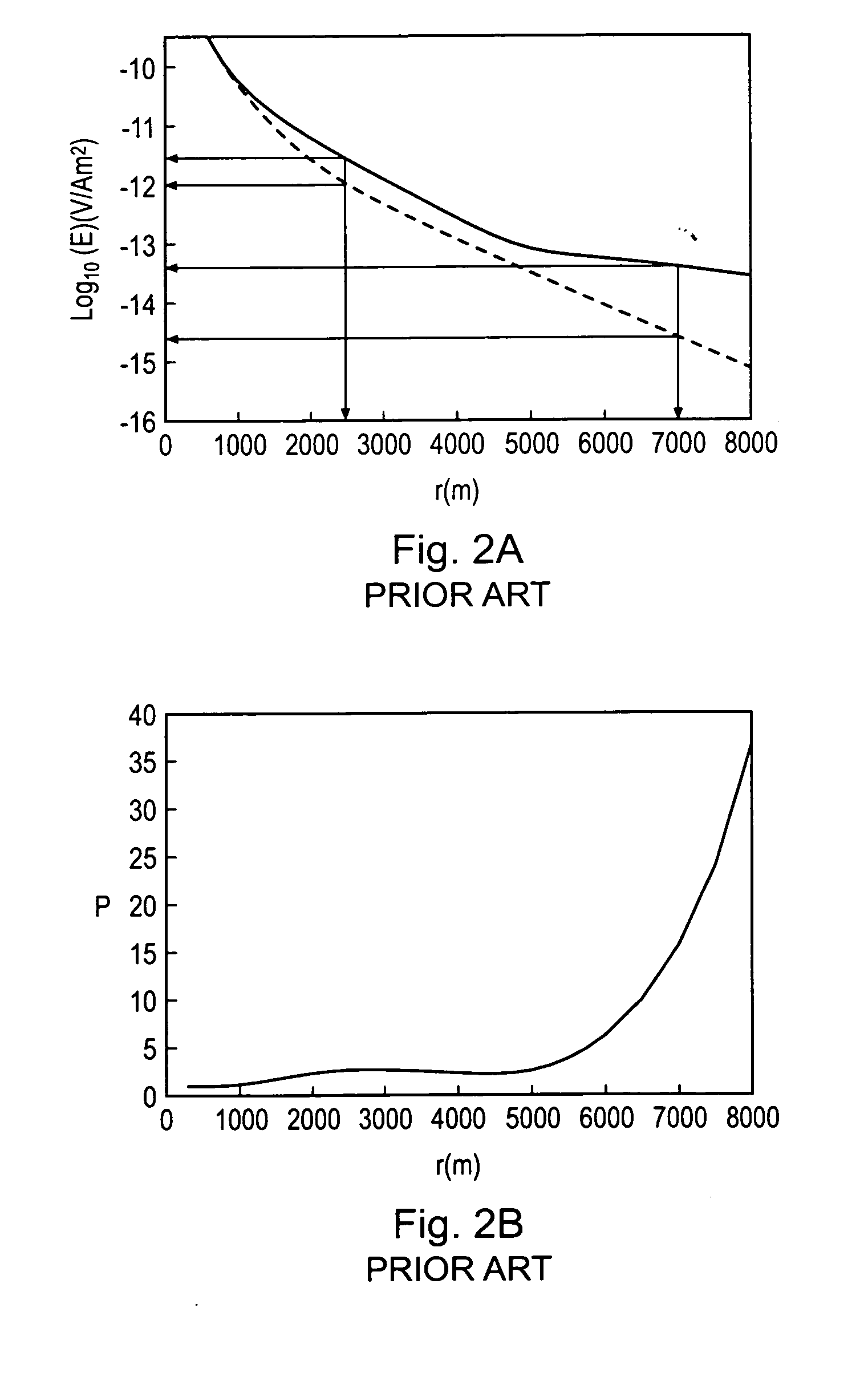Electromagnetic surveying for resistive or conductive bodies
a technology of resistive or conductive bodies and electromagnetic surveying, which is applied in the direction of reradiation, detection using electromagnetic waves, instruments, etc., can solve the problems of significant error in interpreting data, difficult to accurately do this, and generally not providing good results for surveys
- Summary
- Abstract
- Description
- Claims
- Application Information
AI Technical Summary
Benefits of technology
Problems solved by technology
Method used
Image
Examples
Embodiment Construction
[0110]FIG. 4 is a schematic plan view showing a co-ordinate system for describing the relative placement of an HED transmitter 22 and a receiver 25 of the kind shown in FIG. 1. The position of the receiver 25 with respect to the HED transmitter 22 is most suitably described in cylindrical polar co-ordinates, with the center of the HED transmitter 22 providing the origin of the co-ordinate system. The position of the receiver 25 is defined by an azimuthal angle φ and a separation distance (or range) r. The angle φ is measured clockwise from a line passing through, and running parallel to, the HED transmitter axis, as indicated in FIG. 4 by the line marked φ=0°. A receiver placed along this line, i.e. such that is has an azimuthal angle φ of 0°, is referred to as being in an inline or end-on position. A receiver with an azimuthal angle φ of 90°, such that it lies on the line marked φ=90° in FIG. 4, is referred to as being in a broadside position. The electric field at a receiver may b...
PUM
 Login to View More
Login to View More Abstract
Description
Claims
Application Information
 Login to View More
Login to View More - R&D
- Intellectual Property
- Life Sciences
- Materials
- Tech Scout
- Unparalleled Data Quality
- Higher Quality Content
- 60% Fewer Hallucinations
Browse by: Latest US Patents, China's latest patents, Technical Efficacy Thesaurus, Application Domain, Technology Topic, Popular Technical Reports.
© 2025 PatSnap. All rights reserved.Legal|Privacy policy|Modern Slavery Act Transparency Statement|Sitemap|About US| Contact US: help@patsnap.com



